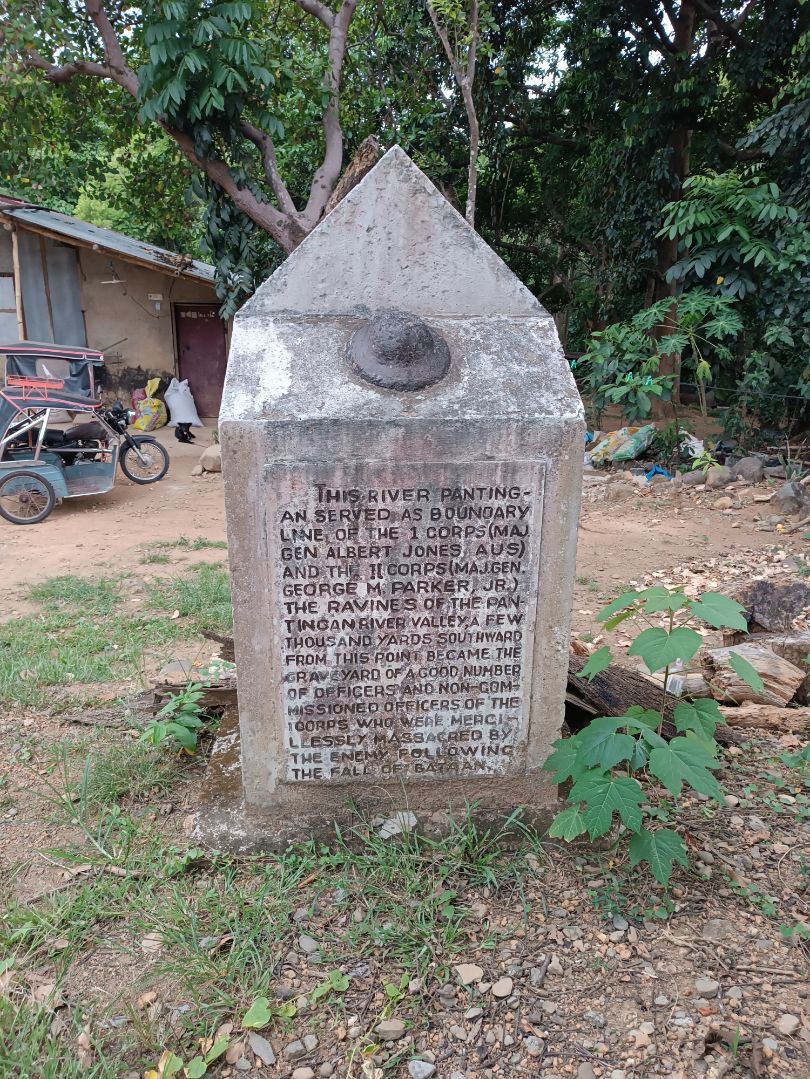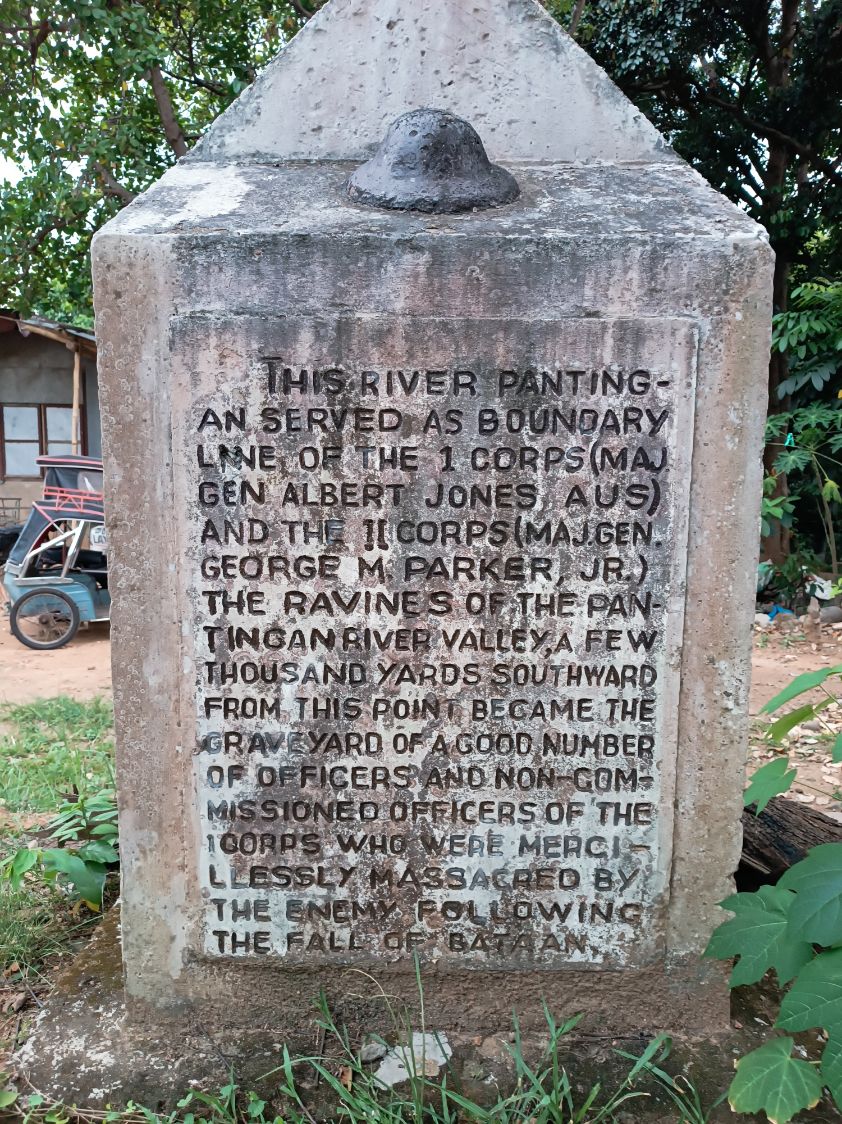River Pantingan Massacre Monument
Details:
Immediately to the right after entering the grounds of the residential property.
Monument
A rectangular block monument with a triangular top commemorating the victims of the massacre. The inscription is written in English in black lettering. At the top surface of the monument is a depiction of a black hat.
On April 12, 1942, many Filipino and American prisoners of war were executed by Japanese soldiers near the Pantingan River. Occurring days after the Fall of Bataan, it was committed in retaliation to the Japanese fatalities of the 1942 Bataan Campaign. It was one of the war crimes that happened in the Philippines during World War II.
The Japanese’ expectations of a swift victory in Bataan were thwarted by the valiant defense shown by the Filipino-American U.S. Army Forces in the Far East (USAFFE). This caused a significant number of casualties for the Japanese and the delay of their tactical timeline. The battle wrapped up in favor of Japan when, on April 9, 1942, the USAFFE laid down their arms due to hunger, disease, and lack of military supplies. Those who surrendered were forced to travel by foot and by train to Camp O’Donnell in Tarlac, in the event known as the Bataan Death March.
Three days after their defeat, a large group of guarded Filipino and American POWs were traversing a trail at the south of the Pantingan River. After the visit of Japanese general Nara Akira (Commander, IJA 65th Brigade), the 1,500 captured enlisted personnel were instructed to continue their march to Balanga. The estimated 400 POW officers that remained were tied together with telephone wires and brought to a nearby ravine.
A Japanese interpreter announced in Tagalog that the group would be punished because of the massive Japanese casualties in the Bataan campaign, and they would not suffer that fate had they surrendered earlier.
After being given a chance to make a last wish, the executions started at around 3:00 PM. One by one, the prisoners were either decapitated with swords or stabbed with bayonets. When the carnage finished at around sunset, only a few survived. The victims’ remains were left at the site, with some of the locals keeping their identification tags and reporting them to the U.S. Graves Registration Service after the war.
Source of information: Project Saysay Incorporated - Project Vinta Facebook page
Monument Text:
THIS RIVER PANTINGAN SERVED AS BOUNDARY LINE OF THE I CORPS (MAJ. GEN. ALBERT JONES AUS) AND THE II CORPS (MAJ. GEN. GEORGE M. PARKER, JR.) THE RAVINES OF THE PANTINGAN RIVER VALLEY, A FEW THOUSAND YARDS SOUTHWARD FROM THIS POINT BECAME THE GRAVEYARD OF A GOOD NUMBER OF OFFICERS AND NON-COMMISSIONED OFFICERS OF THE I CORPS WHO WERE MERCILESSLY MASSACRED BY THE ENEMY FOLLOWING THE FALL OF BATAAN.
Commemorates:
People:
Units:
I Corps
II Corps
United States Army
United States Army Forces in the Far East (USAFFE)
Wars:
WWII
Battles:
Bataan
Pacific Theater
Philippines Campaign (1941–1942)
Other images :


